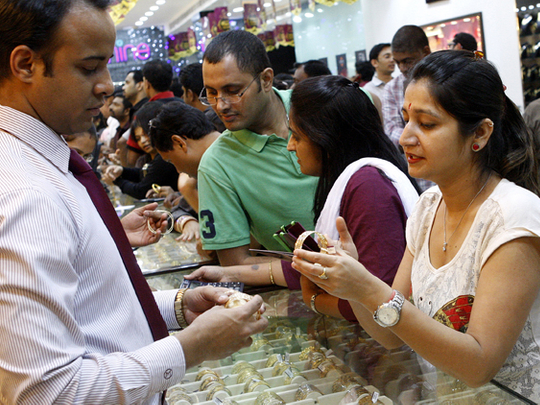
Dubai
The sudden increase in Dubai’s official gold rate on May 2 — which was also the high point of the high-volume ‘Akshaya Trithiya’ campaign — in a span of a few hours could not have been avoided, according to sources in the local gold trade. (Akshaya Trithiya is one of the key dates in the gold retail calendar, especially when it comes to selling to the expat Indian consumer base.)
“From the moment the shops opened for business that day, there was a sharp gain in the global price of bullion; having started at $1,284 an ounce it went up by more than $20 within hours,” said Abdul Salam P. K., a senior member of the Dubai Gold and Jewellery Group.
“This sudden increase at the global level had to be factored into the local selling price of 22K gold to cover retailers’ positions — there was no option.
“In calculating the price on a “per gram” basis for the Dubai gold rate from the “per ounce” bullion rate, there was a 4.5 per cent margin built-in for that day against the average of 3/3.5 per cent. Again, it was because of the sudden run-up in global prices over hours. The actual increase did not amount to more than a few fils rounded out.”
This followed complaints by some shoppers who bought in the later hours of May 2 that they were paying a higher price than those who bought earlier in the day. Some within the gold and jewellery trade were reportedly unhappy with what they thought was a sudden increase. Their contention was that “unusual surges”, particularly during festival seasons, would confuse shoppers.
Their concern was nothing should be done to impact on Dubai’s status as a global hub for the gold retail industry. In the last few days, there were some “whisper campaigns” about the way the gold rate was being calculated.
“We had come across such talk even earlier; in fact six months ago a meeting of the Dubai Gold and Jewellery Group was held where members were informed that all steps must be taken to ensure transparency and retain Dubai’s status as the centre of the trade,” said Salam.
“Except for some instances in Saudi Arabia, Dubai and the UAE has the lowest rate on gold in the Gulf. And even in Saudi Arabia, the making charges for jewellery are much higher than here; Qatar has customs duty on bullion imports while Dubai has none.”
Chandu Siroya, vice-chairman of the Dubai Gold and Jewellery Group, was just as categorical about the gold pricing process in the local market. “Everyone knows that pricing in the global bullion market is not what you get in the local market — each industry has to build in margins based on several factors into the eventual retail pricing,” said Siroya.
“Each industry and the individual entities follow time-tested practices in arriving at their decisions. Gold had made an extraordinary move from being in the $260 an ounce range to $1,900 over decades. — the way margins are calculated have also varied.
“But consumers have still kept faith in gold and as far as Dubai is concerned, retailers here offer the most competitive rates. All the other Gulf states track the Dubai Gold Rate and it’s still the benchmark.”
While margin calculations leave leeway for individual retailers, the biggest component relates to the premium traders have to pay for physical delivery of the gold plus whether the jewellery pieces are imported, which means it carries a local import duty. Dubai historically has a lower premium on physical delivery while in markets such as India it can be quite steep.











